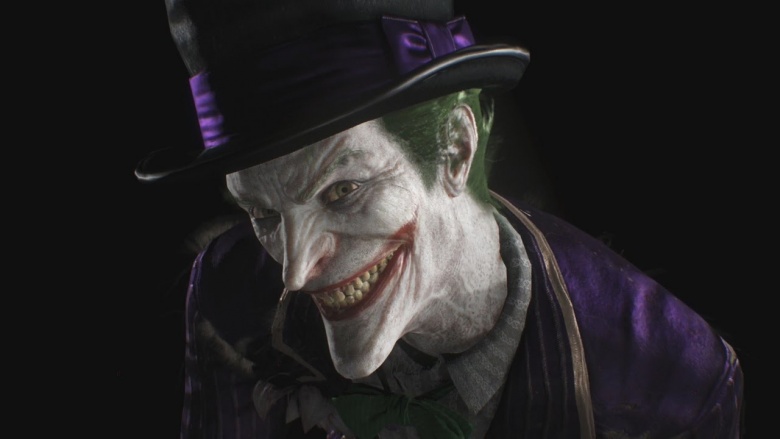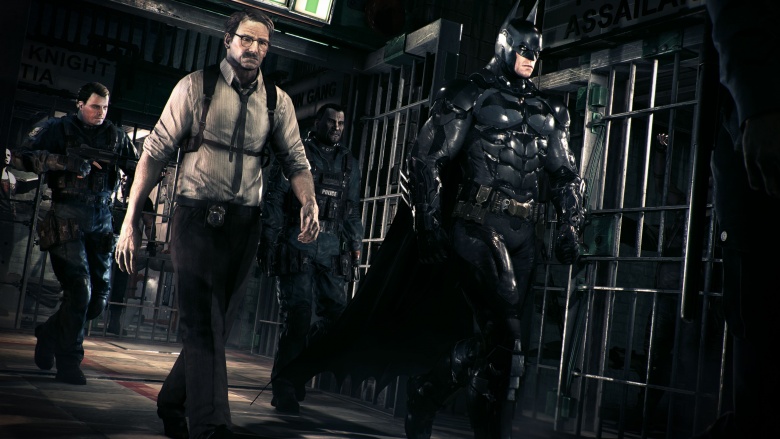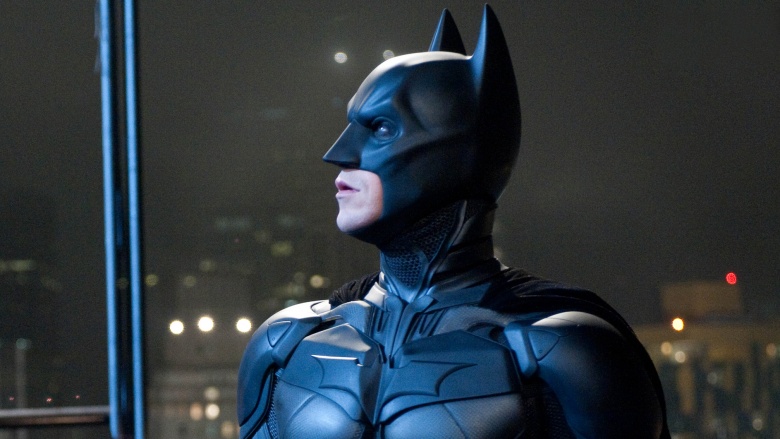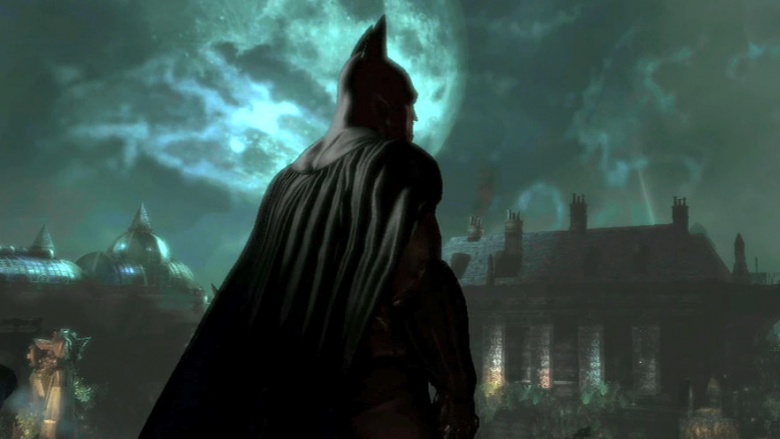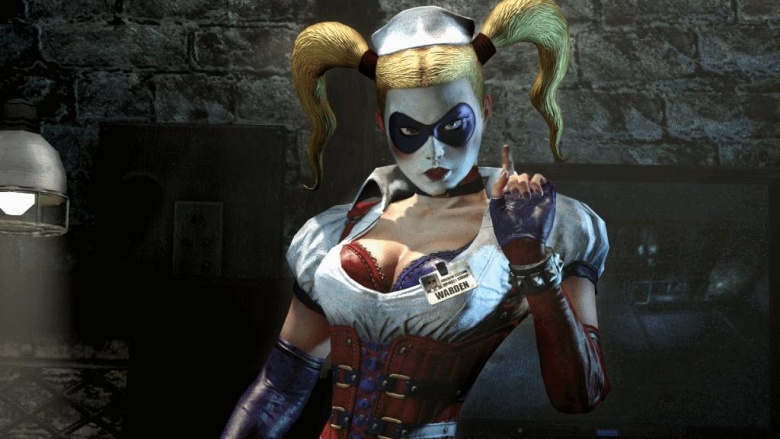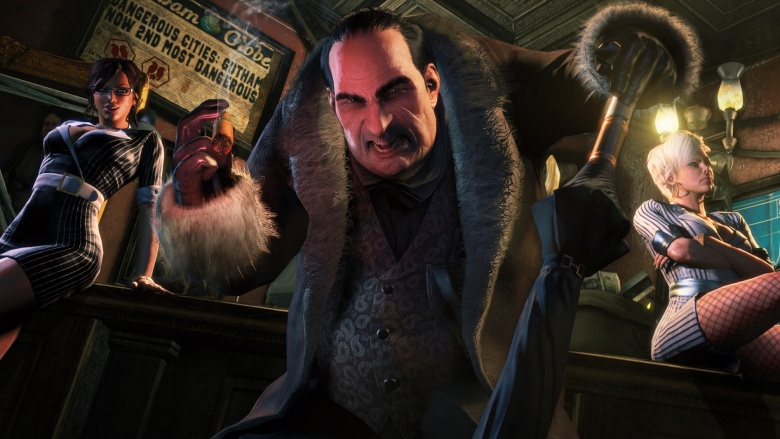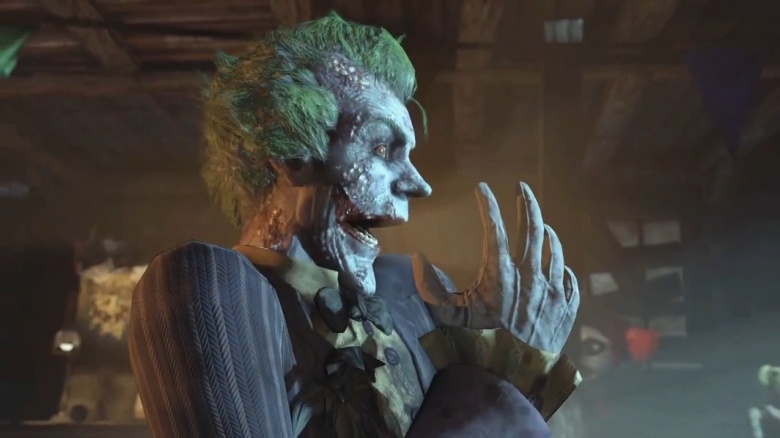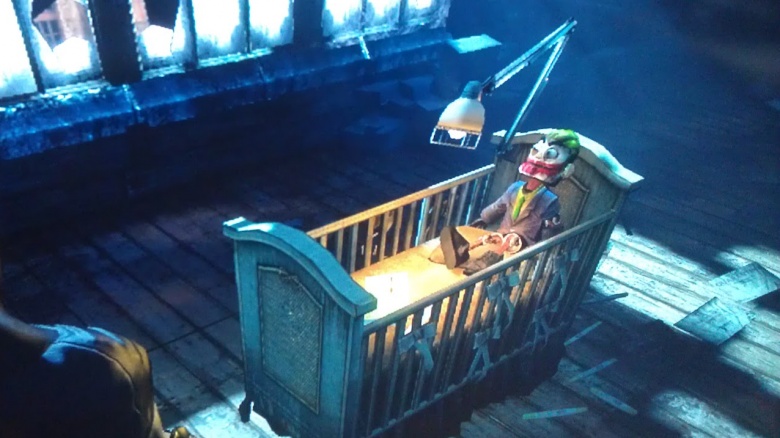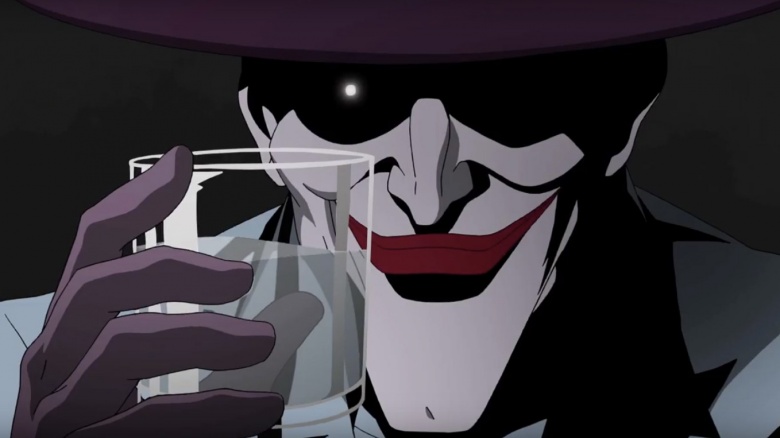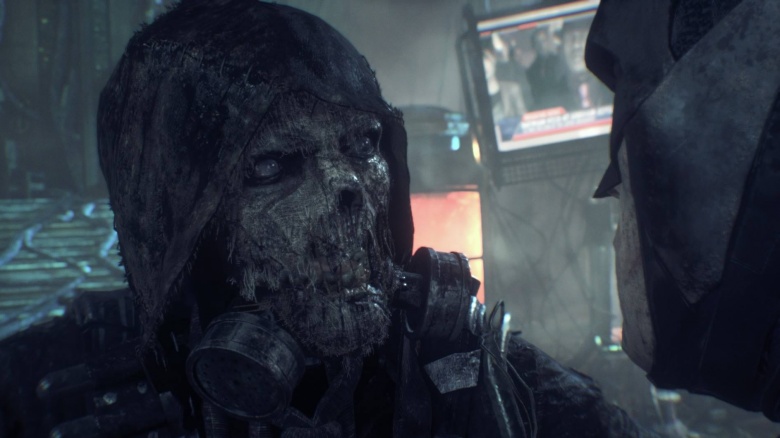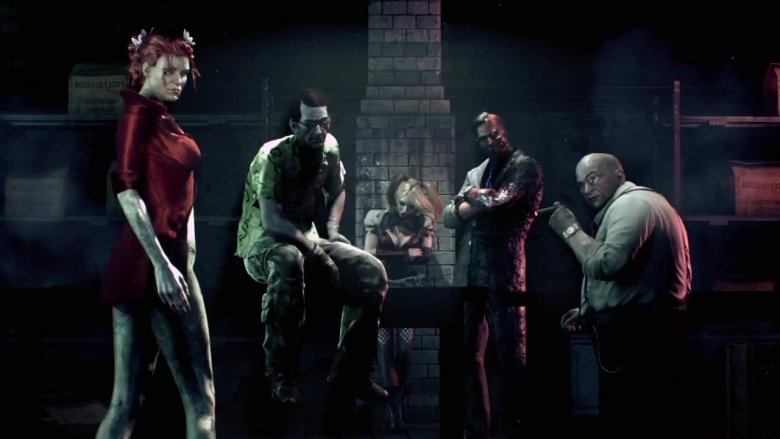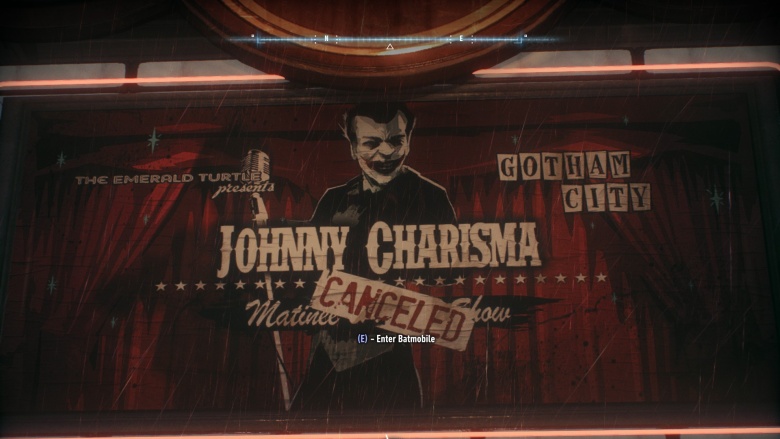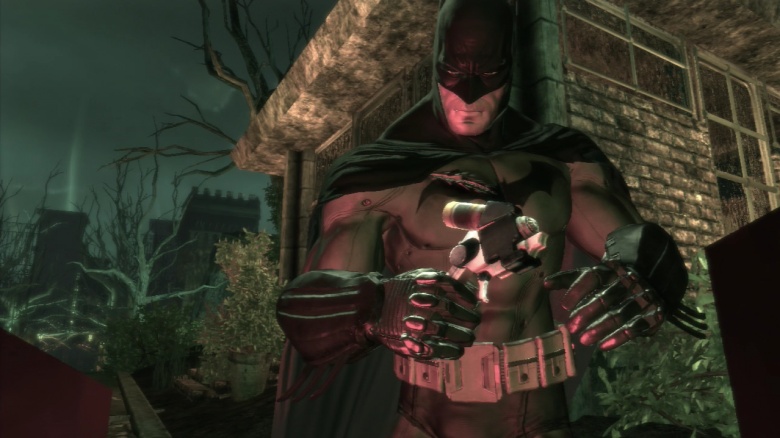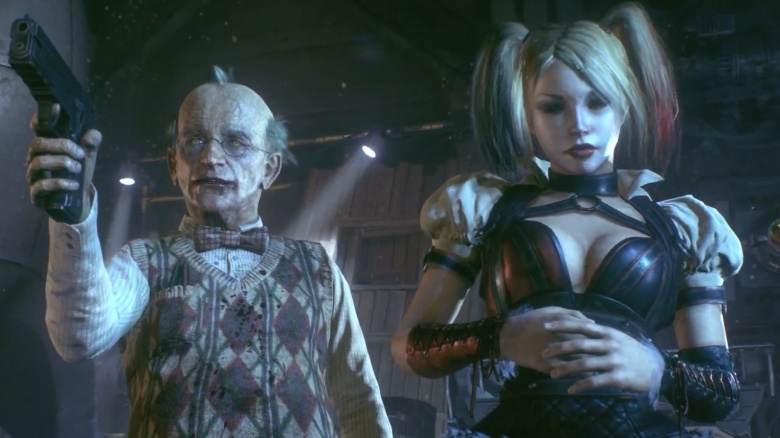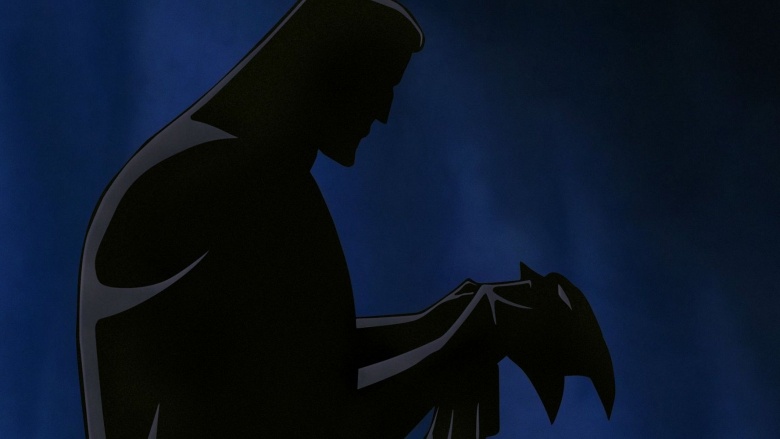Batman: Arkham Facts You May Not Know
Very few games get superheroes right, but Rocksteady's Arkham trilogy truly captured what it means to be Batman. Rocksteady got so much right while developing these games, and fans were left smiling like they'd gotten a nose full of Joker gas. While Batman: Arkham Knight might be the studio's final entry of the series, it's time we patrol Gotham one last time for any secrets the Caped Crusader may have missed. Tell Commissioner Gordon and his team to stand down as we investigate these Batman: Arkham facts you didn't know. As you'd expect, there are major Bat-spoilers ahead.
Mark Hamill as The Joker
Your favorite Joker might be Jack Nicholson, Heath Ledger, Cesar Romano, or even Jared Leto. But when it comes to the voice of the Clown Prince of Crime, Mark Hamill makes for the perfect Joker. Ever since Luke Skywalker first let loose with his surprisingly maniacal laugh on Batman: The Animated Series in 1992, Hamill's voice was forever immortalized as Mr. J. Sure, having "HA" at the beginning of your last name is a sign you're designed to play the villainous clown, but the name "Mark Hamill" literally has the letters to spell "Arkham" in it, which is even better.
A Rogues Gallery of voice acting
Hamill may have gone on to portray the Joker for over two decades across multiple shows, video games, animated features, and movies (as did Kevin Conroy as Batman), but he's not the only noteworthy celebrity to voice a famous face in the Batman: Arkham series. In Batman: Arkham Knight, Commissioner Gordon was voiced by Jonathan Banks of Breaking Bad fame. Oracle/Barbara Gordon was played by Ashley Greene, who starred in the Twilight series. And John Noble, who you may know as Denethor in The Lord of the Rings trilogy or as Walter Bishop from Fringe, voiced Scarecrow. Peter MacNicol, who starred in Ghostbusters II, Ally McBeal, and 24, voiced the Mad Hatter across the series. Interestingly, Loren Lester originally voiced Robin/Dick Grayson throughout Batman: The Animated Series and other animated Bat-features. In turn, he voiced Nightwing throughout The New Batman Adventures. But for Arkham Knight, Lester voiced Man-Bat. Going from playing Batman's partner to a weird science mutant doesn't seem like much of a promotion...
Arkham Asylum happened because the Dark Knight failed
While Christopher Nolan's Batman Begins had its own video game released for the PlayStation 2, GameCube, Game Boy Advance, and original Xbox, fans have wondered why The Dark Knight didn't have one, given the film's widespread success. There actually was a game based on Nolan's sequel in development, but it never saw the light of day. Pandemic Studios, known for their work on the Destroy All Humans! series and Star Wars: Battlefront, was developing an open world Dark Knight title. Unfortunately, the game was nowhere to be found by the time the film hit home video formats. Since most publishers usually want their movie-based games on store shelves by the time the flick hits theaters, the project was canceled, ultimately leading to the developer going kaput. Luckily, this opened the door for the then-unknown Rocksteady Studios to step to the plate with Batman: Arkham Asylum. Without The Dark Knight game failing to materialize, we never would've had the Arkham series.
Cape duty
According to Eurogamer, Batman: Arkham Asylum's development was done by a small team at Rocksteady. One studio member spent two years working on nothing but Batman's cape, designing over 700 different animations and sounds in order to get the Caped Crusader just right. Six years later, Rocksteady would be considerably beefed up, and Batman: Arkham Knight would utilize the Apex physics engine to get Bruce Wayne's cape to appropriately flap around according to his movement while being affected by environmental factors, including the wind.
All on tape
The Arkham series featured audio tape collectibles you could listen to that would depict some sort of psychological interview between a doctor and Gotham's most wanted criminals. During Scarecrow's audio tapes in Arkham Asylum, the villain mentions a certain Dr. Combs and Dr. Murphy. This is in reference to actors Cillian Murphy and Jeffrey Combs playing Scarecrow in Nolan's Dark Knight trilogy and in The New Batman Adventures, respectively. Meanwhile, the dialogue in Harley Quinn's Arkham Asylum audio tapes are taken right from writer Paul Dini's comic, Mad Love, which reminisces about psychiatrist Dr. Harleen Quinzel's first meetings with the Joker...not long before she fell in love with him.
Penguin in the water
In Batman: Arkham Origins, a prequel game that didn't feature Kevin Conroy, Mark Hamill, or Rocksteady Studios (who skipped development on this prequel to focus on Arkham Knight), gamers got to play as a younger Caped Crusader. In this version of Gotham, the Penguin owns a large ship, The Final Offer. The backstory of the vessel reveals it was originally called The Olivia B. Meredith. This name is an homage to actor Burgess Meredith, originally born Oliver Burgess Meredith), who played the umbrella-wielding villain in the 1966 Batman series.
Teasing Mr. J's secret
In Batman: Arkham City, the Joker is dying from the Titan formula he injected himself with in Arkham Asylum. When Batman meets Joker in Arkham City, he looks visibly sick, but later on through the game, he gets mysteriously better. It turns out Clayface was impersonating the dying Joker to continue his plans, but a bunch of lines foreshadow this plot twist later on. Harley Quinn's dialogue suggests that Joker looked perfect, but that it wasn't him. While fighting the Joker in combat, Batman's Detective Mode revealed that he doesn't have a skeleton, as every other criminal you fight does, also suggesting it's not Mr. J. When you go to fight Joker in the Monarch Theater and find out the big reveal, you'll see a fictitious movie called The Terror playing, which was what actor Basil Karlo starred in before turning into Clayface.
Joking for two
The heavy duty implications from Arkham City continue! If you look around Joker and Harley's lair, you'll find a baby crib with The Ventriloquist's puppet—also known as the gangster Scarface—sitting up and dressed up like The Joker. All around the floor are a bunch of negative pregnancy tests, but if you look by the dummy's feet, there's a positive one, suggesting that Harley and Mr. J are pregnant and are planning to bring one twisted child into the world. In the downloadable content expansion Harley's Revenge, it's suggested that Quinn's pregnancy was either lost or a false positive. Just imagine how crazy that kid could've been...
Hamill swears off the clown, temporarily
Mark Hamill was pretty adamant that Arkham City was going to be the last time he would voice the Joker. Considering the amount of dialogue he has throughout the first two games and that he's been voicing the character for over two decades, we don't blame him. He did admit that if the iconic Alan Moore graphic novel Batman: The Killing Joke was ever made into an animated feature, he'd return. His absence in the subsequently released prequel Arkham Origins made fans believe he was serious about it. Luckily, Arkham Knight featured flashback depictions of The Killing Joke, and Hamill returned to voice the clown yet again. Better yet, he got to star in The Killing Joke's animated feature one year after Arkham Knight's release.
Foreshadowing future Arkham games
Rocksteady's Arkham games featured some awesome Easter eggs that revealed the premises of future games in the series. In Arkham Asylum, Warden Sharp's office contained a secret room that featured blueprints and schematics for building a massive expansion to the island facility into a quarantined chunk of Gotham itself. This would eventually become the massive prison area of Gotham known as Arkham City. Likewise, Arkham City features a derelict boat in the docks, suggesting that Scarecrow survived the events of Arkham Asylum and is planning something big in Gotham. Rocksteady's third and final game of the series, Arkham Knight, featured Scarecrow as its main villain. Arkham Knight had a few references to Superman, so we've got our fingers crossed we'll be playing a Rocksteady Man of Steel game one day in the future.
Changing the Rogues Gallery
Gotham's most wanted have gone through some noteworthy changes over the years. The Rogues Gallery not only look more realistic in Arkham Knight due to the increased graphics capacities of the PlayStation 4 and Xbox One, but they also changed their outfits in accordance with the times. Taking place in autumn (in comparison, Arkham City and Origins both took place in the winter), Penguin is shaved bald, ditched the long coat, and is wearing a sweat-stained dress shirt with the sleeves rolled up. Two-Face's half-charred suit has the sleeves rolled up as well. Likewise, the Riddler tossed the multi-piece, question mark-themed suit and matching derby hat in favor of a similarly themed button up. Poison Ivy still walks around in nothing but an open shirt and a pair of undies, but at least she cut her hair and wears it up to reflect the climate change—not that any of you would have noticed. Harley Quinn added a black skirt to her look to signify her continuing to mourn over poor, old Mr. J. Scarecrow's face has been a bit deformed after being attacked by Killer Croc in Arkham Asylum, as his gas mask and burlap bag covering have grotesquely blended into his face.
A hit of fear toxin
After the Dark Knight took in some of Scarecrow's enhanced fear toxins in Arkham Knight, Batman started seeing its effects later on in the story. The Joker's invasion of Batman's psyche starts resulting in small, visible differences throughout Gotham City. Batman starts seeing billboards for the singer Johnny Charisma turn into Joker-themed advertisements (which means a lot if you know what happens to Charisma in the story). Various statues, signs, and gargoyles littered across Gotham's landscape start wearing the Joker's visage as well. Of course, you can't forget the various rooftops and landmarks where the Joker will just appear next to Batman and continue to insult you while you desperately try to unravel the Arkham Knight and Scarecrow's plans.
Explosive Cool Whip
Batman's Explosive Gel was a mandatory tool used in exploring most of the Arkham series. In each game, Batman could spray out some gel and it would detonate for a small explosion that would clear thin walls and other barriers. The foamy hissing noise that the Explosive Gel makes whenever it's being sprayed is actually audio taken from a can of whipped cream.
Never use your birthday as your password
Before the Joker died in Arkham City, he sent out his infected blood to random hospitals that were used in blood transfusions. Five people (including Bruce Wayne) were infected by the blood and started becoming their own versions of The Joker. Batman kept them all confined, but they eventually broke out of his makeshift prison. As Batman tries to apprehend the escaped Jokers, Johnny Charisma is locked away with a bomb vest. You have to review security footage to find out the numerical code to open the door. Watching him input the code in a mirror, you find out the code is 0539. This number can be broken down to 05 and 39—or May, 1939. And check this out: Batman's first appearance in Detective Comics #27 happened in May 1939.
Vengeance, the night, Batman
The third episode of the classic Batman: The Animated Series featured the debut of Scarecrow in Gotham City, spreading his nightmarish fear toxin all over Gotham University. After getting doused with Dr. Crane's poison, Batman occasionally hallucinates throughout the episode. His worst fear is revealed when he sees his father calling him a disgrace. The Dark Knight conquers his fears and realizes he is far from a failure. Saying the iconic lines of "I am vengeance. I am the night. I am Batman!" Bruce Wayne resolves his fears on his own, rendering the toxin useless. These are the same lines used when Scarecrow revealed Batman's secret identity to the world and the Joker almost takes over Bruce Wayne's mind. Over two decades after Kevin Conroy first delivered those lines, and they're still just as chilling.


